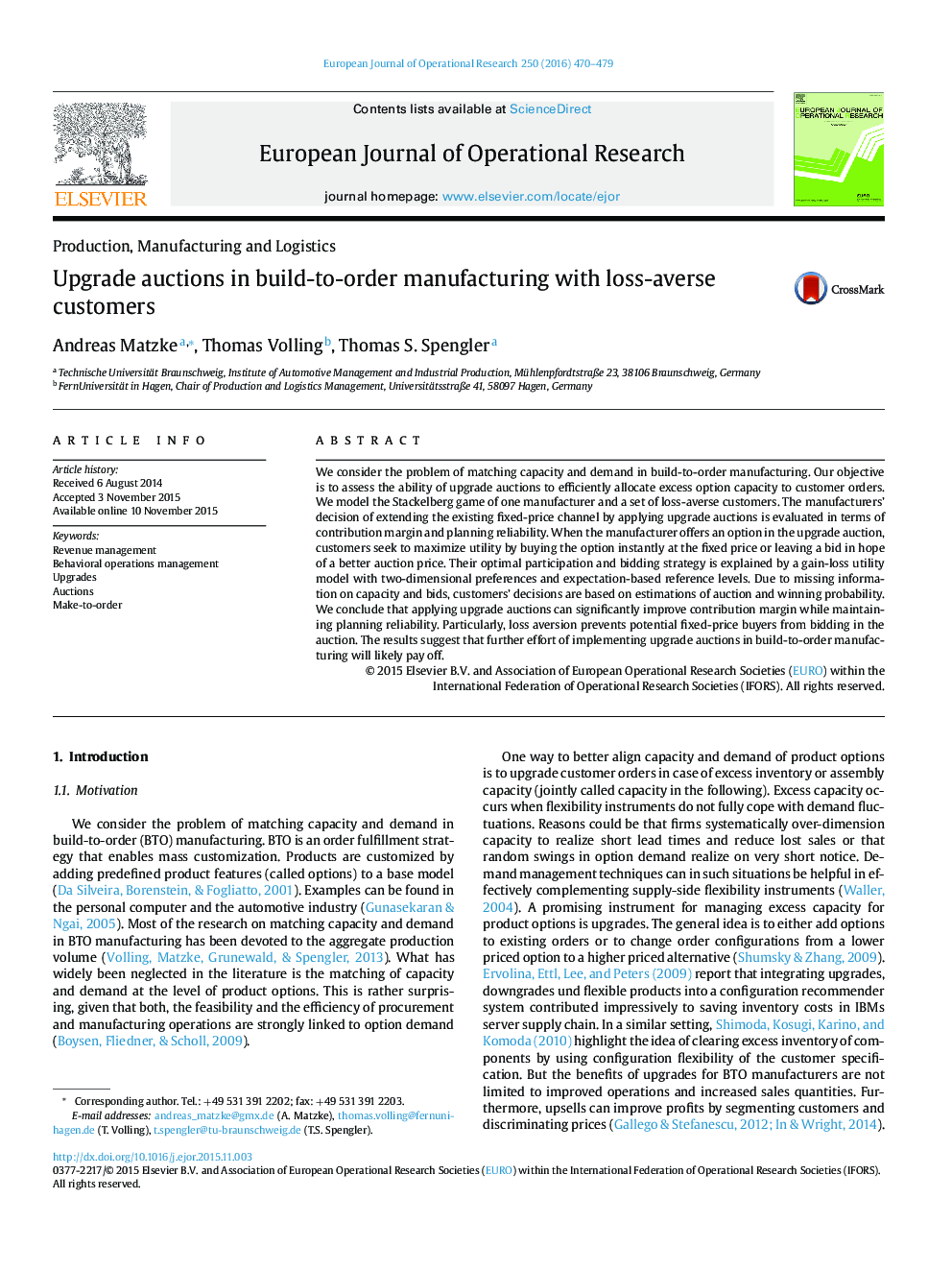| Article ID | Journal | Published Year | Pages | File Type |
|---|---|---|---|---|
| 479316 | European Journal of Operational Research | 2016 | 10 Pages |
•Manufacturers always benefit from upgrading orders of low-valuation customers.•Strategic behavior of high-valuation customers can impair the results.•A gain-loss utility model explains different behavior of the two customer groups.•Contribution margin can be improved while planning reliability is maintained.•Highest improvement when loss aversion exceeds a critical value.
We consider the problem of matching capacity and demand in build-to-order manufacturing. Our objective is to assess the ability of upgrade auctions to efficiently allocate excess option capacity to customer orders. We model the Stackelberg game of one manufacturer and a set of loss-averse customers. The manufacturers’ decision of extending the existing fixed-price channel by applying upgrade auctions is evaluated in terms of contribution margin and planning reliability. When the manufacturer offers an option in the upgrade auction, customers seek to maximize utility by buying the option instantly at the fixed price or leaving a bid in hope of a better auction price. Their optimal participation and bidding strategy is explained by a gain-loss utility model with two-dimensional preferences and expectation-based reference levels. Due to missing information on capacity and bids, customers’ decisions are based on estimations of auction and winning probability. We conclude that applying upgrade auctions can significantly improve contribution margin while maintaining planning reliability. Particularly, loss aversion prevents potential fixed-price buyers from bidding in the auction. The results suggest that further effort of implementing upgrade auctions in build-to-order manufacturing will likely pay off.
